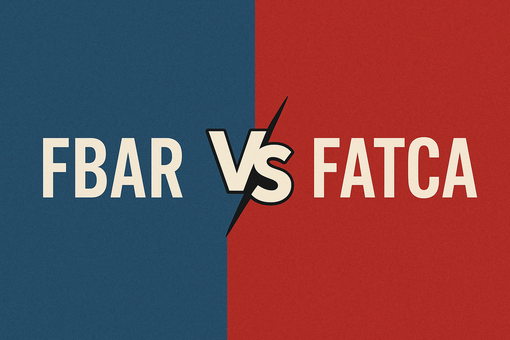Standard vs itemized deduction on the US tax return
As an expat, dealing with the tax laws of two countries can be a challenging task.
One of the most important decisions you'll make is whether to take the standard deduction or itemize your deductions.
What is standard deduction?
Let's break it down: the standard deduction is a fixed amount that reduces your taxable income. It's set by the IRS and varies based on your filing status.
For 2024 the standard deduction amounts are:
- $14,600 for single filers and married individuals filing separately,
- $29,200 for married couples filing jointly and surviving spouses,
- $21,900 for heads of household.
This option is great if you don't have many itemizable deductions or if your expenses don't surpass the standard deduction. Plus, it's simpler since you don't have to keep track of specific expenses.
What is an itemized deduction?
On the other hand, itemized deductions allow you to claim specific expenses incurred during the tax year, like state and local taxes, mortgage interest, charitable donations, and medical expenses that exceed a certain percentage of your income.
It is rather beneficial in cases if you:
- have lots of expenses that are not covered by the standard deduction,
- live in a state with high state and local taxes,
- have high mortgage interest or charitable giving.
However, itemizing deductions requires meticulous record-keeping and receipt management.
So, before you decide which option is best for you, weigh the pros and cons and consult with a tax expert to make sure you're maximizing your deductions and minimizing your tax liability.
Standard deduction vs. itemized
When it comes to reducing your taxable income, you have two options: the standard deduction or itemized deductions.
The standard deduction is a fixed dollar amount that reduces your taxable income, set by the IRS each tax year based on your filing status. This option is simple, as you don't need to provide any documentation or proof of expenses.
For the 2023 tax year(returns are due April 2024), the standard deductions are:
- $14,600 for single filers (or - married filing separately);
- $21,200 for head of household;
- $29,200 for married couples filing jointly.
Also -
Standard deduction for individuals who are 65 or older / blind
| Filing Status | Age / Blindness | Deduction |
|---|---|---|
|
Single or Head |
65 or Older | $1,950 |
| Blind | $1,950 | |
| 65 or Older & Blind | $3,900 | |
|
Married, Widow |
One spouse 65 or older or blind | $1,550 |
| One spouse 65 or older and blind | $3,100 | |
| One spouse 65 or older, both spouses blind | $4,500 | |
| Both spouses 65 or older | $3,000 | |
| Both spouses 65 or older, one spouse blind | $4,500 | |
| Both spouses 65 or older, both spouses blind | $6,000 |
On the other hand, itemized deductions allow you to list each individual expense you incurred during the year that the IRS allows you to deduct. This option can be beneficial if you have incurred significant expenses that are eligible for deductions and exceed the standard deduction amount.
To claim itemized deductions, you'll need to provide documentation and receipts for each expense you're claiming. Examples of itemized deductions include:
- state and local taxes,
- mortgage interest,
- charitable contributions, and
- medical expenses.
NOTE! The choice between the standard and itemized deduction is based on simple calculations, as the goal is - to lower the tax liability by reducing the taxable income.
The standard deduction is a fixed dollar amount that can be claimed by all taxpayers, while itemized deductions are a list of expenses that can be claimed. The option that results in the lower tax bill should be chosen.
Pro Tip: If your itemized deductions are less than the standard, you'll save more on your taxes by taking the standard one. It is best to consult a tax professional for guidance on your specific situation.
Unsure of each piece to be filed?
Get your free tax consultation
Is itemizing deductions right for me?
Like I mentioned earlier, itemizing deductions is an option for taxpayers who have incurred significant expenses that are eligible for deductions and exceed the standard deduction amount for their filing status. To help you determine if itemizing is right for you, here are some of the itemized deductions you may be able to claim on your 2023 tax return:
- State and local income, sales, and property taxes: You can deduct up to $10,000 of the total amount you paid in state and local taxes.
- Mortgage interest: If you own a home, you can deduct the interest you paid on your mortgage.
- Charitable contributions: If you made donations to qualified charitable organizations, you may be able to deduct them.
- Medical and dental expenses: If you incurred significant medical or dental expenses, you may be able to deduct the amount that exceeds 7.5% of your adjusted gross income.
- Investment expenses: If you incurred expenses related to your investments, such as investment advisory fees, you may be able to deduct them.
When deciding whether to itemize, you'll need to gather all the necessary documentation and receipts for the expenses you're claiming, and calculate the total amount.
Compare that to your standard deduction, if it is larger than the standard deduction, itemizing will give you a larger tax savings.
But if it is smaller than the standard deduction, it would be more beneficial to take the standard deduction.
NOTE! The tax laws and regulations are subject to change, and what is true for one year may not be the same for the next.
To sum up
In conclusion, the standard deduction and itemized deductions are two options available to expatriates for reducing their taxable income.
The best option for you will depend on your individual circumstances, including your expenses and income level.
FAQ
Choosing to itemize or take the standard deduction depends on whether your itemized deductions exceed the standard deduction amount. Evaluate which option offers more tax benefits based on your individual tax situation.
Itemize deductions if the total amount exceeds the standard deduction for your filing status.
The main drawback of itemizing is the increased complexity and time needed to gather and document all deductible expenses compared to the simplicity of claiming the standard deduction.
Itemized deductions include mortgage interest, state and local taxes, charitable donations, and certain medical and miscellaneous expenses.



